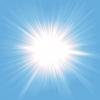Given its role as a potent (and comparatively cheap) glycation inhibitor, I was disappointed to hear that Yerba Mate might be carcinogenic. However, given that the truth is often shades of gray and not black and white, a lot of things get mislabeled as dangerous when in fact they can be perfectly healthy when used correctly. With that in mind, I was curious to what extent Yerba Mate exhibited a carcinogenic effect. Is it similar to aspartame (not at all) or chewing tobacco (very), or somewhere in between. Below are some studies on Yerba Mate and cancer:
The first evaluation of Yerba Mate I found was done by the International Agency for Research on Cancer. The evaluation, found here, indicated that:
"Three case-control studies in South America have investigated the association between mate drinking and oesophageal cancer. Two studies from Uruguay reported an increased risk among drinkers and dose-response relationships, even after adjustment for confounding variables, including alcohol consumption and smoking. Heavy drinkers of mate were approximately ten times more likely to develop cancer than people who did not drink mate. Another study in southern Brazil showed a nonsignificant increase in risk for oesophageal cancer among daily drinkers of mate after adjustment for confounding variables; however, intake levels were lower than in the previous studies, and no attempt was made to assess a possible dose-response relationship.
The role of mate in oral cancer was the subject of another case-control investigation in Brazil. The crude analysis showed a dose-response effect with the frequency of mate drinking, but this effect was no longer present after adjustment for smoking and alcohol consumption. After such adjustment, mate drinkers were 1.6 times more likely to have oral cancer than nondrinkers of mate - a nonsignificant difference. A case-control study from Uruguay reported a dose-response association between mate drinking and oropharyngeal cancer, which remained after adjustment for age, alcohol and smoking. One study from Uruguay reported a three-fold increased risk for laryngeal cancer among mate drinkers, with a significant dose-response relationship after adjustment for age, tobacco and alcohol. The results of a case-control study of bladder cancer in Argentina showed no evidence of trend in risk with increasing consumption of mate.
Overall, the case-control studies on mate drinking and cancer of the upper gastrointestinal tract suggest a strong association, whereas no such association was seen in one study of bladder cancer. These findings would be compatible with an effect of mate drinking due either to the composition of the beverage or to the temperature at which it is consumed or both, since all of these studies were conducted in populations that consume hot mate. No data were available on populations that drink cold mate. Some issues must be resolved before a conclusive result is obtained: (i) Awareness of the possibility that mate drinking may increase the risk of cancer of the upper gastrointestinal tract may have led to increased reporting of mate drinking for cancer cases as compared to controls. (ii) The results require confirmation by other groups of investigators. (iii) The possibility of residual confounding by alcohol drinking and tobacco smoking cannot be excluded entirely, although this was adjusted for in all of the studies."
The evaluation concluded that: "Mate is not classifiable as to its carcinogenicity to humans (Group 3). Hot mate drinking is probably carcinogenic to humans (Group 2A)." Smaller quantities (less than 1 liter daily) and warm rather than hot mate consumption were found to increase risk only slightly; alcohol and tobacco consumption had a synergistic effect on increasing oral, throat, and esophageal cancer. The increased risk, however, could be credited to the high temperatures in which the mate is consumed. The celular damage caused by thermal stress could lead the esophagus and gastric epithelium to be metaplasic, adapting to the chronic injury. Then, mutations would lead to celullar displasia and to cancer.
Study: Maté consumption and the risk of squamous cell esophageal cancer in uruguay.
Yerba Mate has also been associated with other types of cancer as well.A retrospective hospital-based case-control study was carried out at the Oncology Institute of Montevideo, Uruguay, to investigate the role of maté consumption in esophageal cancer risk. The study included 344 cases with squamous cell carcinoma of the esophagus and 469 controls recruited between January 1988 and August 2000. Maté consumption was significantly associated with an increased risk of developing esophageal cancer and showed a clear dose response, with a relative risk of 2.84 [95% confidence interval (CI), 1.41-5.73] for those drinking more than 1 liter/day of maté as compared with nondrinkers. Subjects who self-reported drinking maté at a very hot temperature had an almost 2-fold increase in risk [odds ratio (OR), 1.87; 95% CI, 1.17-3.00] compared with those drinking warm to hot maté, after adjusting for cumulative consumption of maté. Maté amount and temperature were observed to have independent effects and, although no departure from multiplicativity was observed between the two covariates, those drinking more than 1 liter/day of maté at a very hot temperature had a 3-fold increase in risk (OR, 2.95; 95% CI, 1.30-6.74) compared with those drinking less than 0.5 liter/day of maté at a warm to hot temperature. Subjects with high cumulative exposure to maté in the presence of low alcohol and tobacco exposures presented a lower-risk estimate (OR, 1.52; 95% CI, 0.88-2.62), whereas those with high cumulative exposures to maté, alcohol, and tobacco presented a 7-fold increase in esophageal cancer risk (OR, 7.10; 95% CI, 3.75-13.46). The population-attributable fraction as a result of maté consumption was calculated to be 53%, of which the sole effect of amount and temperature was 14.8 and 12.6% respectively, and 14.9% was attributable to high maté consumption at high temperature.
Study: Bladder cancer and mate consumption in Argentina: a case-control study.
Mate is a 'tea', made from Ilex paraguariensis, widely consumed in South America, as mate con bombilla and mate cocido. Mate consumption has been associated with esophageal, oral, lung, and bladder cancers. This bladder cancer case-control study involved 114 Argentinean case-control pairs. Mate consumption was recorded for time of interview, and 20 and 40 years previously. Mate con bombilla consumed 20 years ago was associated with bladder cancer in ever-smokers (odds ratio=3.77, 95% confidence interval: 1.17-12.1), but not in never-smokers. Mate cocido was not associated with bladder cancer. These results are consistent with a previous study in Uruguay.
Study: Non-alcoholic beverages and risk of bladder cancer in Uruguay.
BACKGROUND: Bladder cancer is the fourth most frequent malignancy among Uruguayan men. A previous study from Uruguay suggested a high risk of bladder cancer associated with maté drinking. We conducted an additional case-control study in order to further explore the role of non-alcoholic beverages in bladder carcinogenesis. METHODS: In the time period 1996-2000, 255 incident cases with transitional cell carcinoma of the bladder and 501 patients treated in the same hospitals and in the same time period were frequency matched on age, sex, and residence. Both cases and controls were face-to-face interviewed on occupation, tobacco smoking, alcohol drinking and intake of maté, coffee, tea, and soft drinks. Statistical analysis was carried out by unconditional multiple logistic regression. RESULTS: CONCLUSION: Our results suggest that drinking of maté, coffee and tea may be risk factors for bladder carcinoma in Uruguay.Ever maté drinking was positively associated with bladder cancer (odds ratio [OR] 2.2, 95% confidence interval [CI] 1.2-3.9) and the risk increased for increasing duration and amount of maté drinking. Both coffee and tea were strongly associated with bladder cancer risk (OR for coffee drinking 1.6, 95% CI 1.2-2.3; OR for tea drinking 2.3, 95% CI 1.5-3.4). These results were confirmed in a separate analysis of never-smokers.
I was unable to obtain results for this study:
Study: Habitual risk factors for head and neck cancer.
Chronic tobacco smoking and alcohol consumption are well-established risk factors for the development of squamous cell carcinoma (SCC) of the head and neck. There are, however, a variety of other habitual and culturally based activities that are less commonly seen in the Western world and that are also risks factors for the development of this type of cancer. In this era of globalization, many of these habits have now crossed borders and appear in various areas throughout the world. This article reviews habitual and social risk factors for cancer of the head and neck, excluding smoking and alcohol consumption. These factors include chewing tobacco and snuff, areca nut in its various forms, Khat leaves, and the drinking of Mate. EBM RATING: D.
Study: Maté, coffee, and tea consumption and risk of cancers of the upper aerodigestive tract in southern Brazil.
Consumption of maté, a tea-like infusion of the herb Ilex paraguariensis, is common in South America. Drinkers have high risks of upper aerodigestive tract cancers, but it is conceivable that this high risk may be attributable to confounding by smoking alcohol, and other exposures. To test this hypothesis, we analyzed the data from a case-control study of upper aerodigestive tract cancers conducted in Southern Brazil. We matched noncancer controls (N = 756) to cases (N = 378) on the basis of age, sex, and period of admission. We estimated the effect of mateé consumption by conditional logistic regression with adjustment for smoking, alcohol, sociodemographics, and several dietary items, considered as confounders. The unadjusted relative risk (RR) for all upper aerodigestive tract cancers was 2.1 [95% confidence interval (CI) = 1.6-2.7]. Some excess risk persisted after adjustment for potential confounders (RR = 1.6; 95% CI = 1.2-2.2). Most of the excess risk for maté drinkers was for oral (RR = 1.9; 95% CI = 1.1-3.3) and laryngeal (RR = 2.2; 95% CI = 2.2; 95% CI = 1.1-4.5) cancers. There was no evidence of associations with coffee and tea drinking. We conclude that the association of maté consumption with upper aerodigestive tract cancer risk is unlikely to result from insufficient control of confounding by critical exposures. Owing to its high prevalence in Southern South America, maté drinking may be linked to as many as 20% of all cases occurring in this region.
My interpretation of these studies is that the carcinogenic effect of Yerba Mate is synergistic with both temperature and exposure to other carcinogens such as smoking and chewing tobacco. Yerba Mate, consumed in absense of high temperatures and these additional substances, likely still poses some cancer risk. For the occasional (read: rare) high AGE meal, a glass or two of Yerba Mate might be beneficial in inhibiting glycation and probably poses little to no risk. However, it should not be made a regular dietary staple of anyone seeking to establish a life extension regimen. Lifelong exposure to even once daily Yerba Mate infusions might produce deleterious effects.
My next question is, does Yerba Mate increase the esophageal cancer occurrence in South American countries above Western nations? According to the WHO, the South American nations are not notable for head and neck cancers. Other sources note China, Iceland, India and Japan, the United Kingdom, as well as the region around the Caspian Sea as having a higher incidence of this cancer. Below is a world map of the cancer prevalence according to the WHO:
http://en.wikipedia....h_-_WHO2004.svg
Given the South American nations lack of esophageal cancer prevalence in the above statistics, it can be concluded that either the cancer data is not reliable (how frequently is cancer even reported as a cause of death in rural South America?) or despite high use of Yerba Mate, it isn't causing cancer at a epidemic rate similar to smoking and chewing tobacco. It could be that only individuals predisposed to developing this rare cancer are susceptible to Yerba Mate.
Edited by Skotkonung, 04 December 2009 - 09:24 AM.
















































